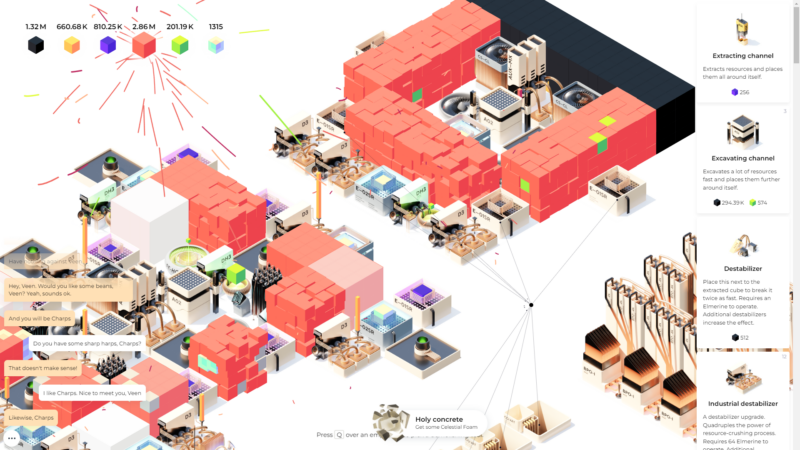
Enlarge / Your author is eight hours in and only recognizes roughly 50 percent of the objects and resources in this provided screenshot. It gets deeper—and weirder. (credit: Playsaurus)
There haven't been many times in my life where I've wondered if this feeling I have is something that oil barons must have felt at the height of their Gilded Age powers.
But Sixty Four got me there. I'm still not sure I've ever played a $6 game that had me so fully engaged while also deeply disquieted about the nature of humanity.
Sixty Four (Windows and Mac, on Steam) has been running for more than seven hours on my computers. "Running" isn't quite right, though. Early on in Sixty Four, you're actively clicking, upgrading, and figuring out what's going on. As the game goes on, and you figure out some virtuous loops, you can technically leave it running in the background while you do other things, checking in occasionally to fuel a machine or start a conversion. I write "technically" because while the game is capable of working in the background, indifferent to the human need to build, refine, and expand, you very well may not be.



0 Comments